I went on this trip almost one year ago on Jan. 6, 2012 and the original purpose was to share a ride with a Japanese classmate who was going back to his hometown in Hyogo Prefecture (near Kobe) so I could go to the Kansai region (Osaka, Kyoto, Kobe) for sightseeing.
Since I had mostly visited most of the mainstream tourist attractions of Japan and I wanted to find some place "off the beaten track" to visit, I figured it would be convenient to combine my visit to the Kansai region with a trip to Shirakawa-go and Kanazawa.
The main attraction to Shirakawa-go are the traditional "gassho-zukuri" (合掌造り) farmhouses that were built hundreds of years ago in response to the snowy winters and the deep isolation from the rest of Japan.
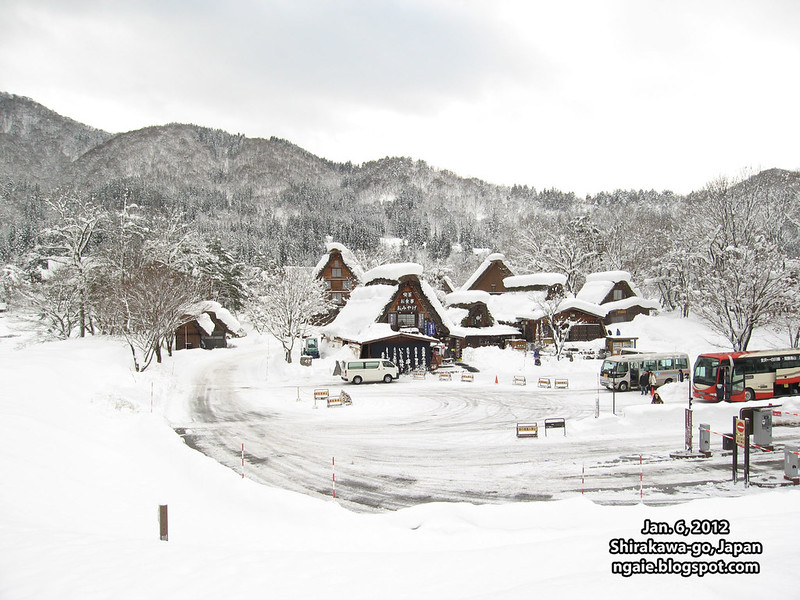
So where is Shirakawa-go? Actually it is literally located in the middle of nowhere. The red marker shows the location of Shirakawa-go and it is located deep in the middle of Gifu Prefecture. To get there, I had to take a limited express train from Kyoto to the city of Kanazawa (blue marker) on the Sea of Japan side and then I had to take an early morning bus ride after staying overnight at Kanazawa.
View 2012-01-06 Shirakawa-go in a larger map
Luckily, due to the high growth economic period of Japan during the 60s, 70s and 80s, there is now an expressway which connects the village to the rest of Japan and the expressway offers nice views of the mountains.
Pictures from the bus on the expressway en route to Shirakawa-go.
I was surprised by the number of foreigners who were taking the bus with me, a sizable number (by Japan tourism standards) of Europeans and Australians.
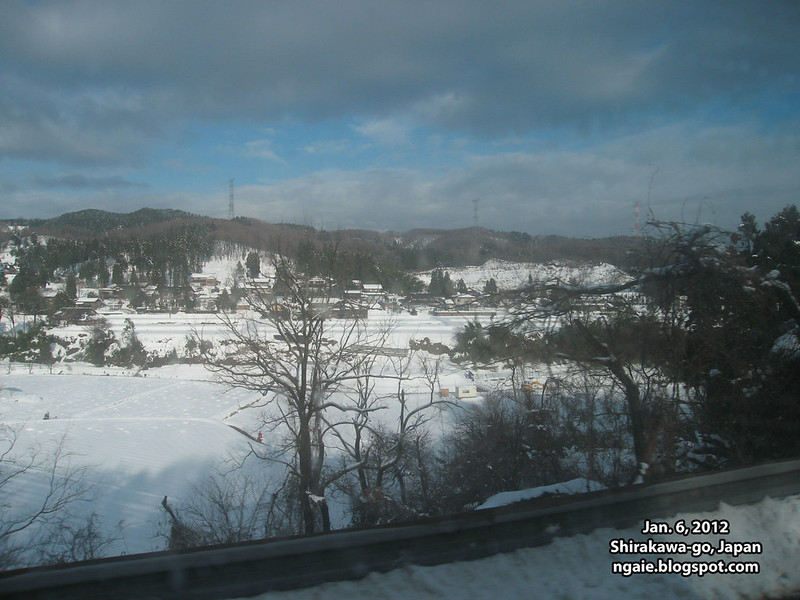
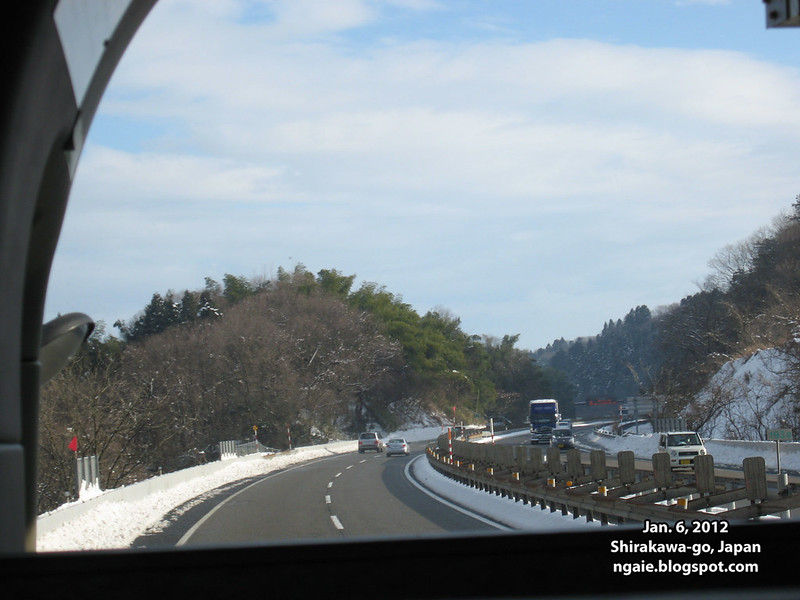
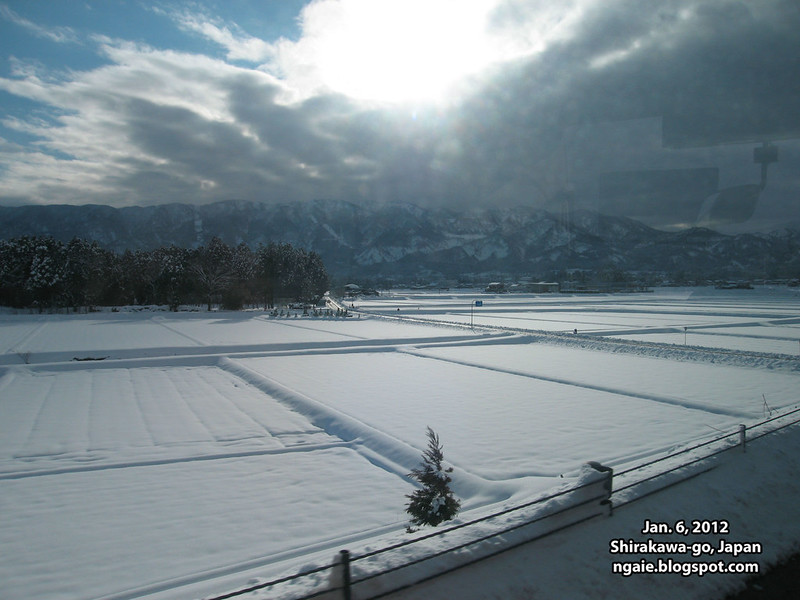


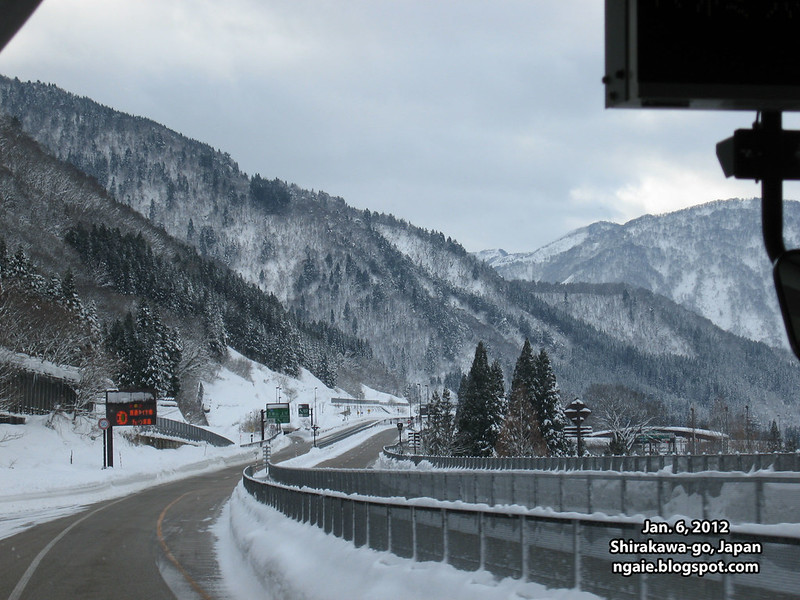
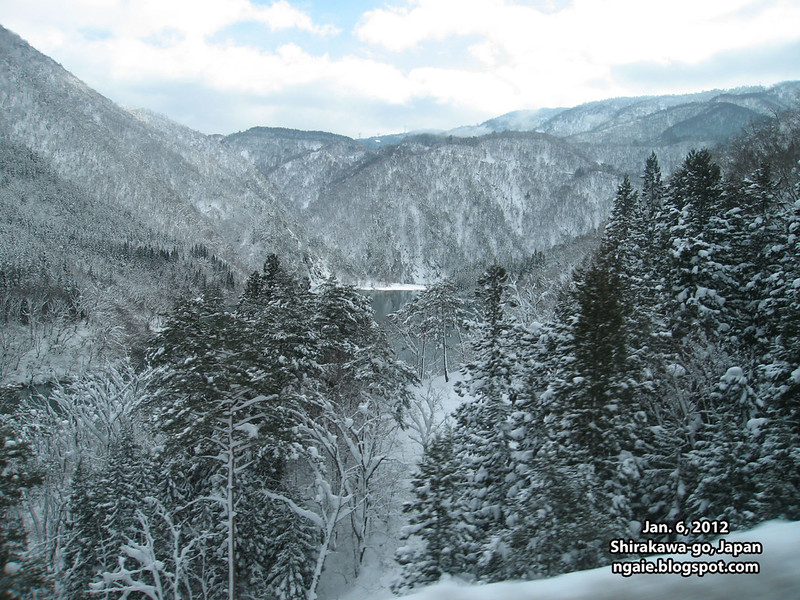
This is not Shirakawa-go, but some village adjacent to the highway.
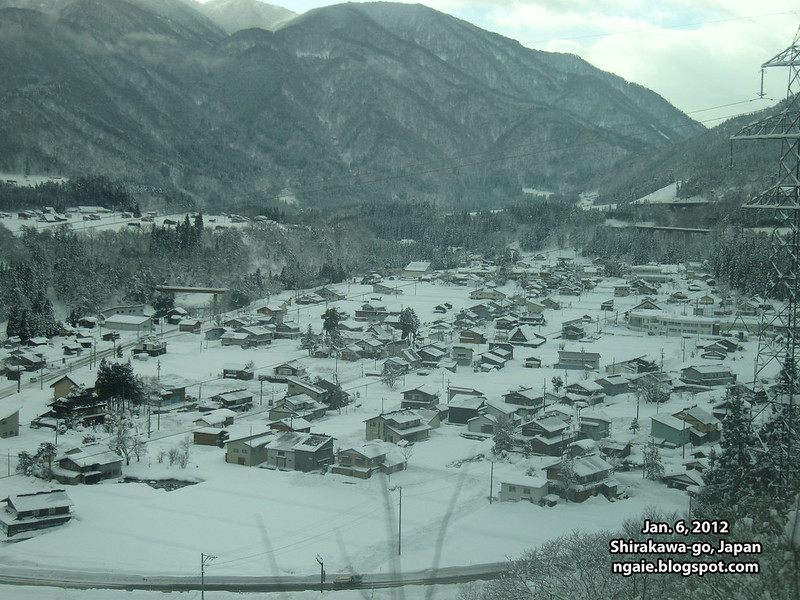
After around 1.5 hours, I arrived at Shirakawa-go. There was only one bus that departed from 10:20 from Kanazawa and arrived at 11:35 at Shirakawa-go. This is the main "bus station" in the village. Surprisingly there were busload after busload of tour groups, mainly from Hong Kong, Taiwan or China.

"Shirakawa-go: UNESCO World Heritage Site" - sign in snow.
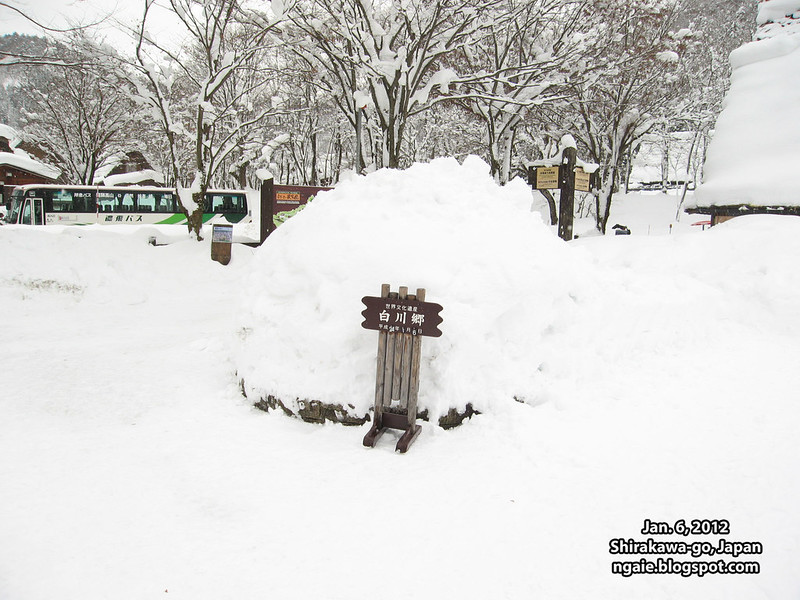
Map of the village.
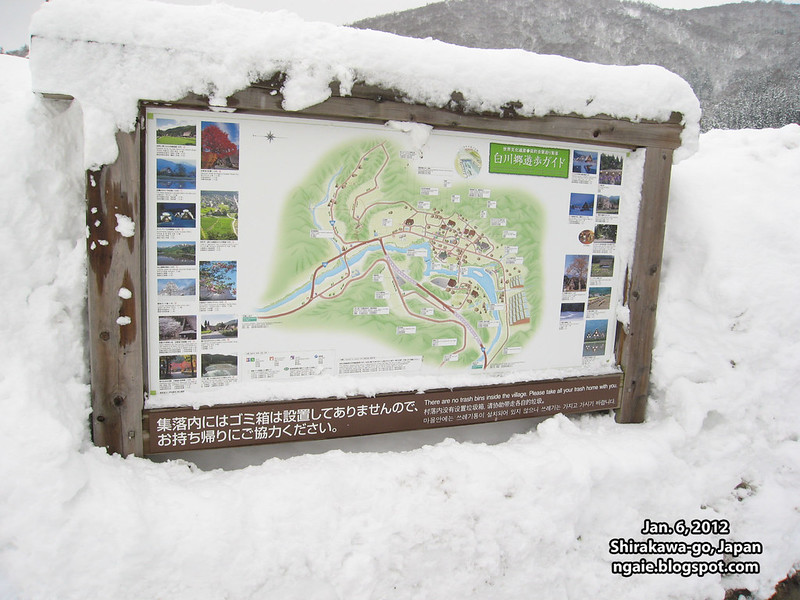
To reach the "main street" of the village, I had to cross this suspension bridge.

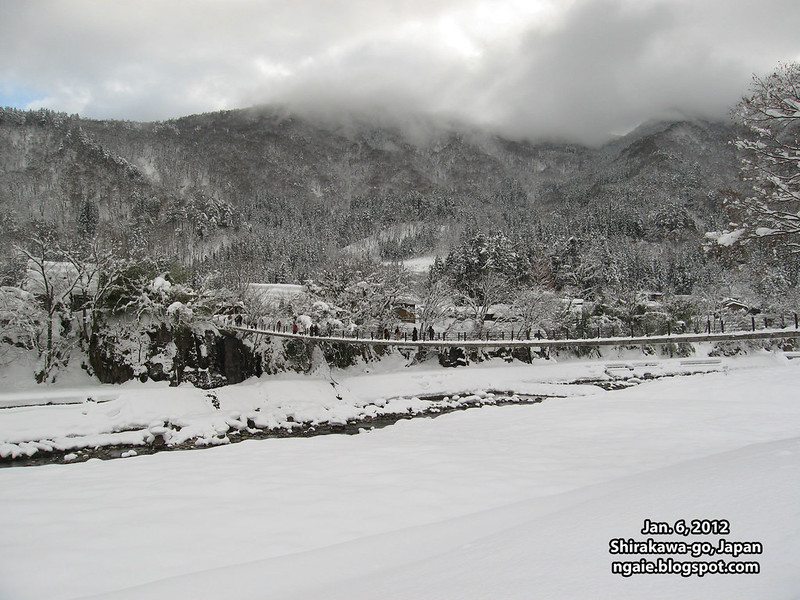
From the suspension bridge.
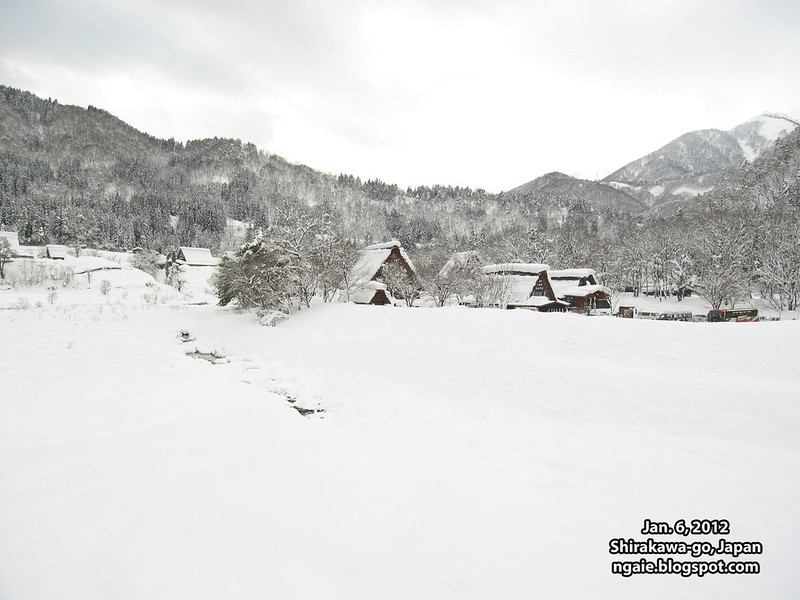
The snow covered stream that the suspension bridge crossed over.
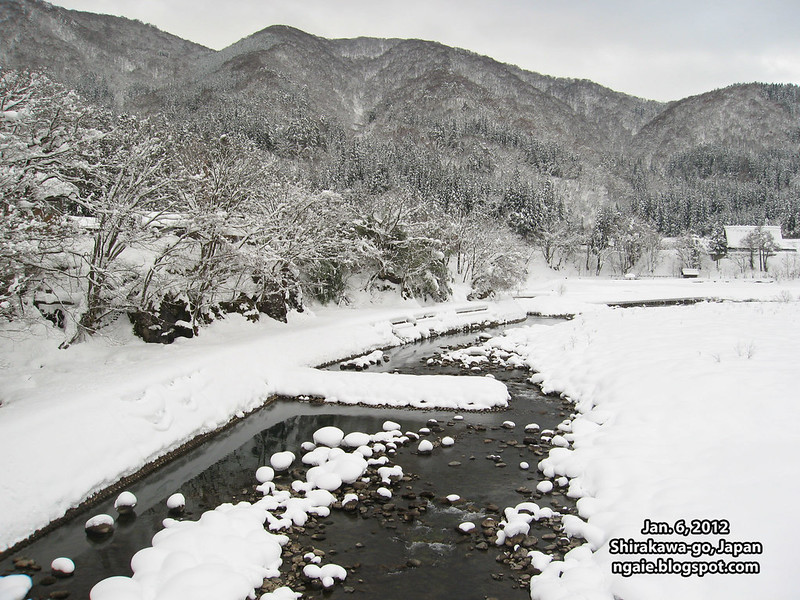
The main village area.
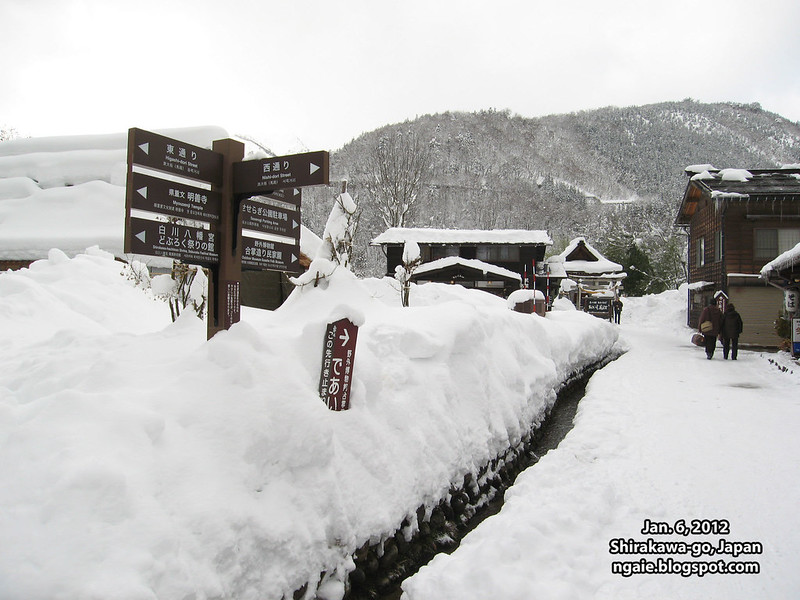
Shops just getting ready to open.
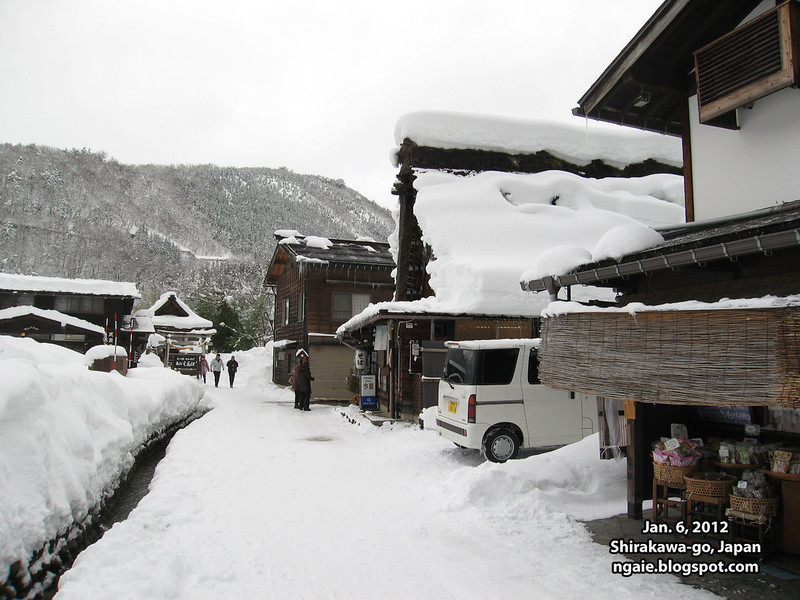
The traditional "gassho-zukuri" farmhouses.
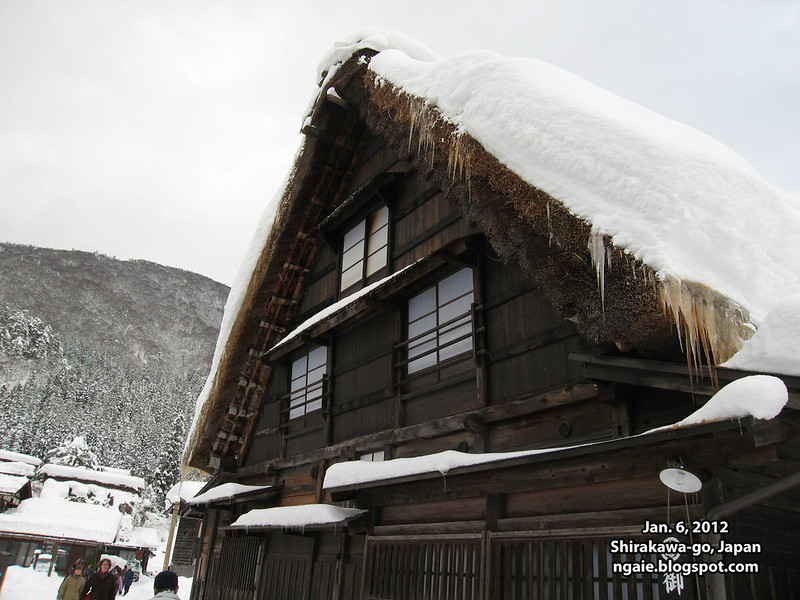
Most of the "gassho-zukuri" farmhouses are used nowadays as ryokan for tourists who want to experience the traditional "rustic" way of life in the Japan countryside.
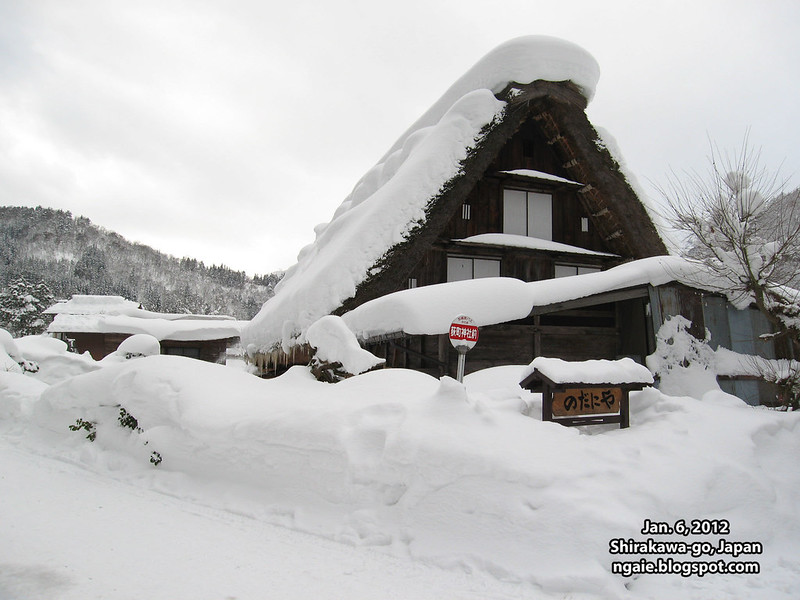
This is the only street of Shirakawa-go. The few shops mainly sell locally made crafts and locally made food souvenirs.
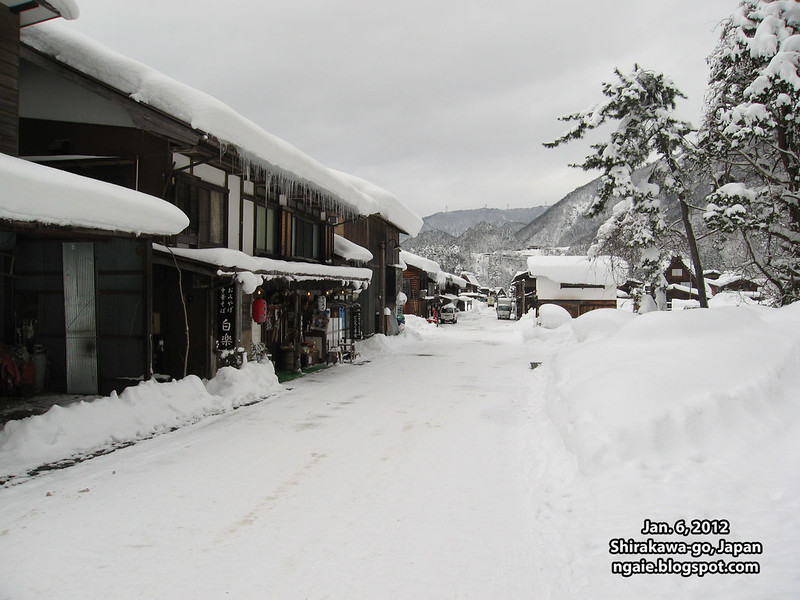
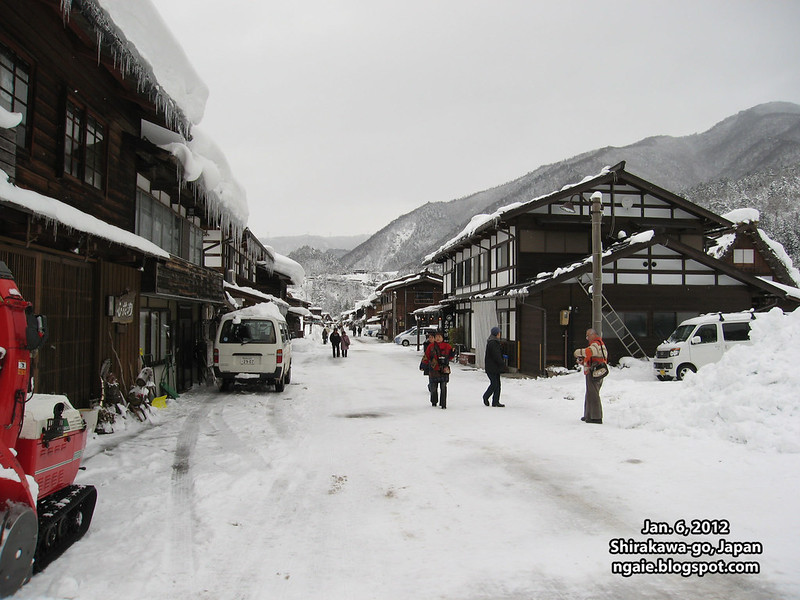

Clearing snow.
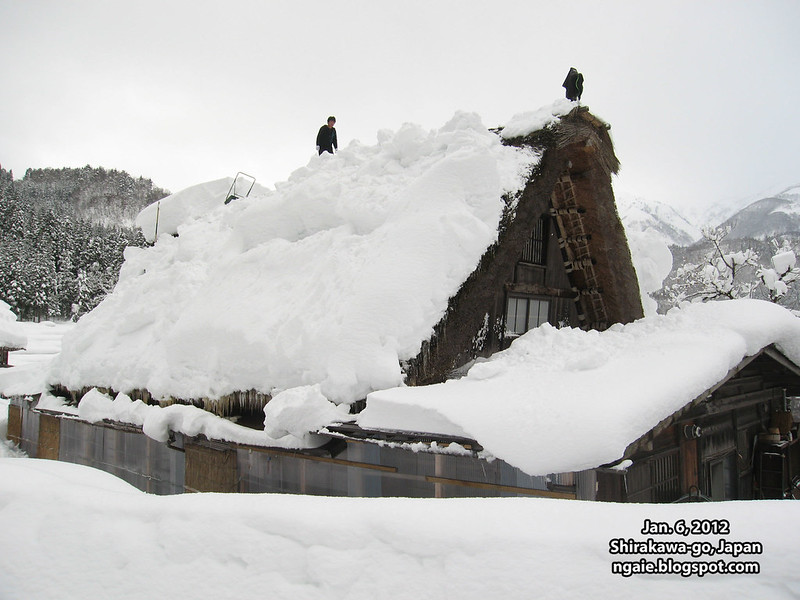
Local shrine.
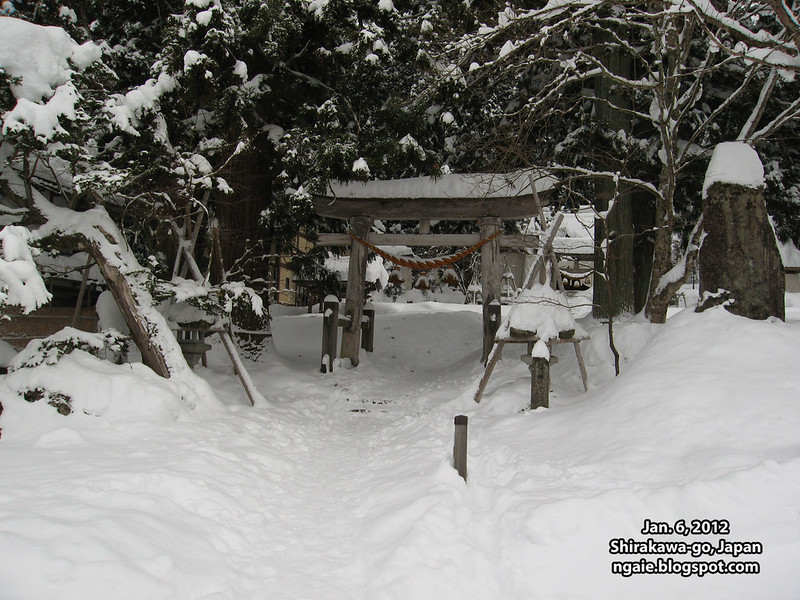
After trekking to my ryokan in a "gassho-zukuri" (on the far end of the village) while pushing my luggage through the snow-filled streets, it was time for lunch.
Prior to coming, I had researched some travel information and people suggested that I order the 2000 yen, Hida beef (飛騨牛, marbled soft Japanese wagyu beef) meal from the local cafeteria. Although everything was self-service (i.e., you had to get your own water from the water machine), the meal tasted more like restaurant quality than cafeteria quality.
Basically, you had to cook the rare beef to your liking over the mini charcoal? stove. The beef was topped with miso which you were supposed to grill it with.
The information from the previous visitors was right, it was very tasty!
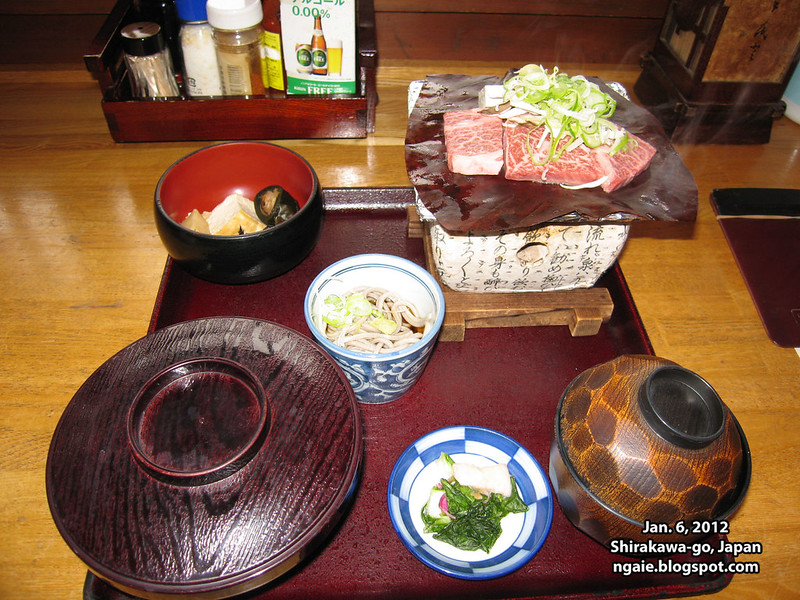
After lunch I went to visit some "gassho-zukuri" farmhouses that had been turned to museums to document the traditional way of life.
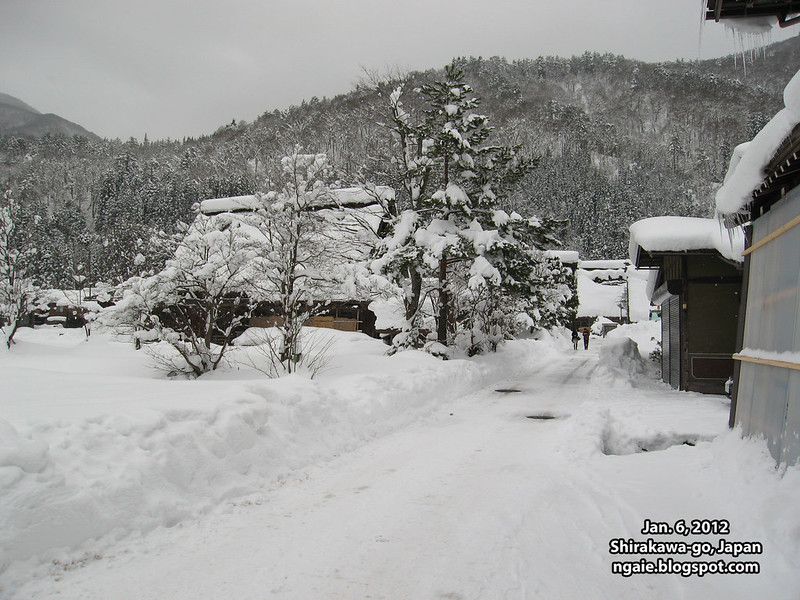
I went to 2 farmhouses and to the open air museum.
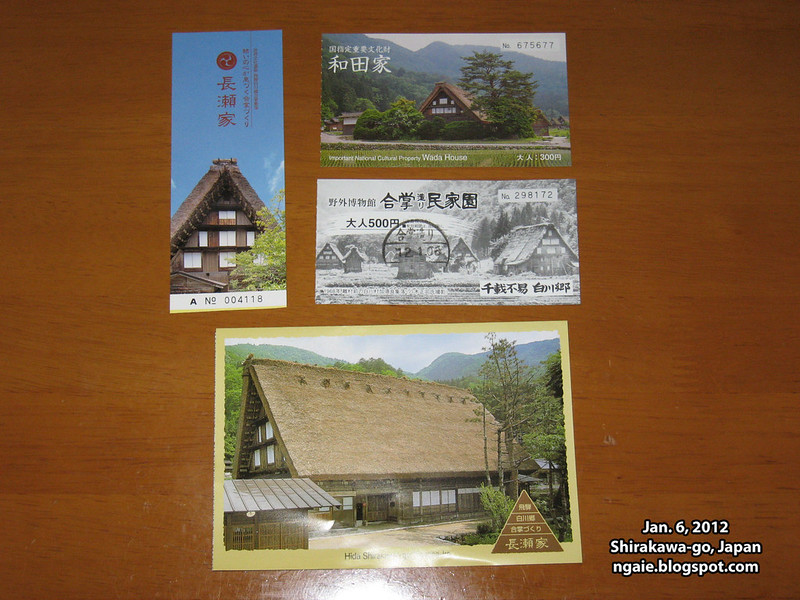
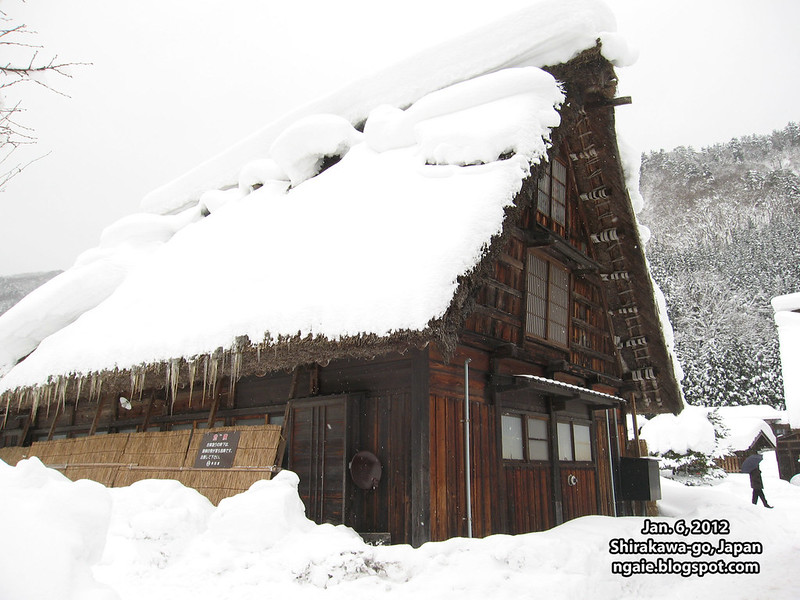
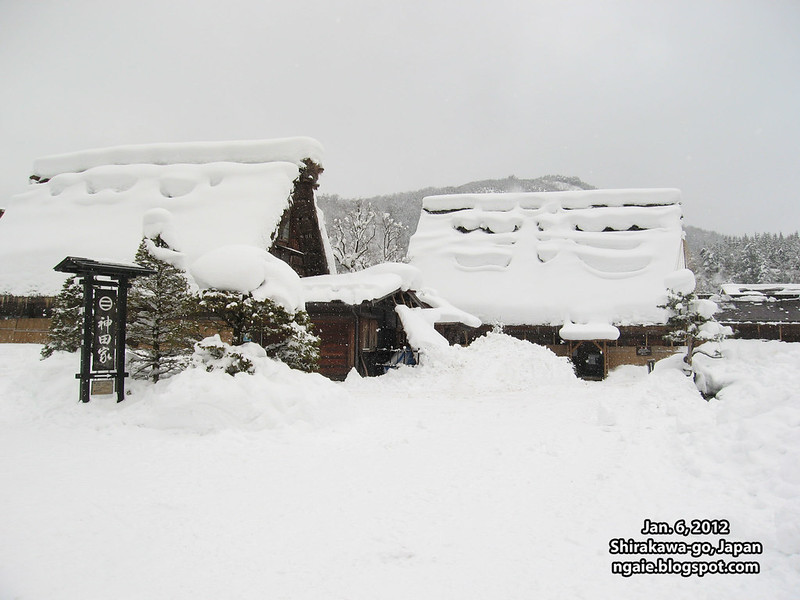
The insides of a "gassho-zukuri" farmhouse.
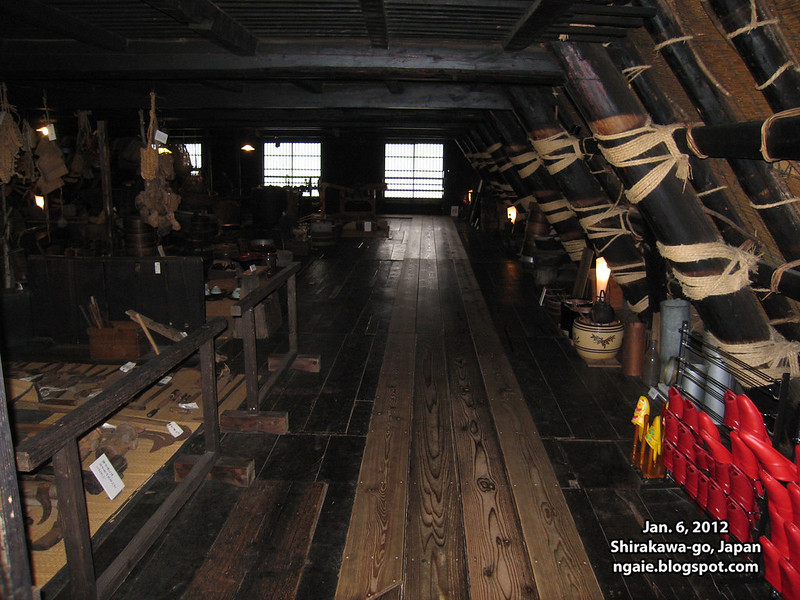
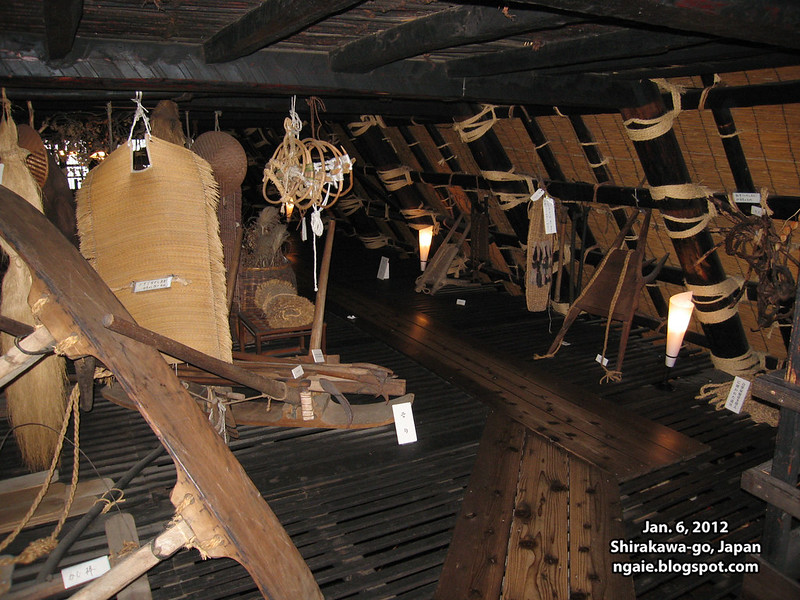

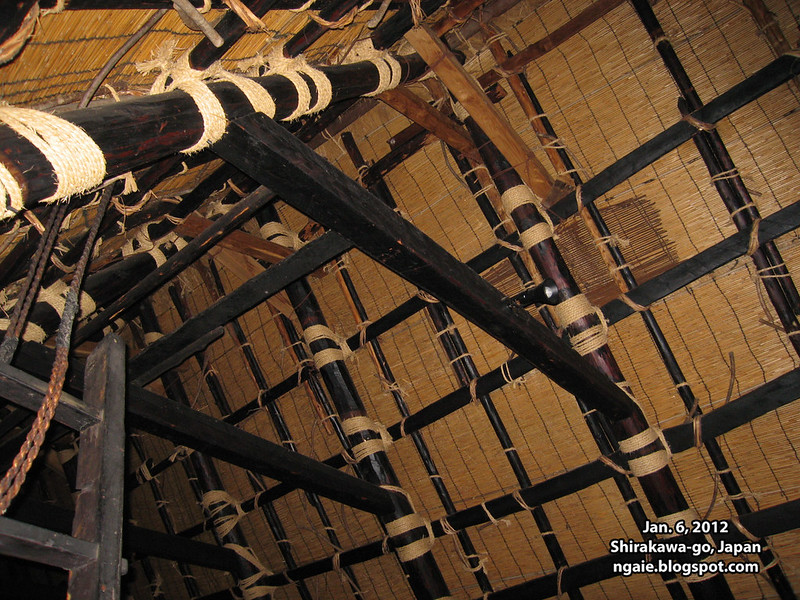
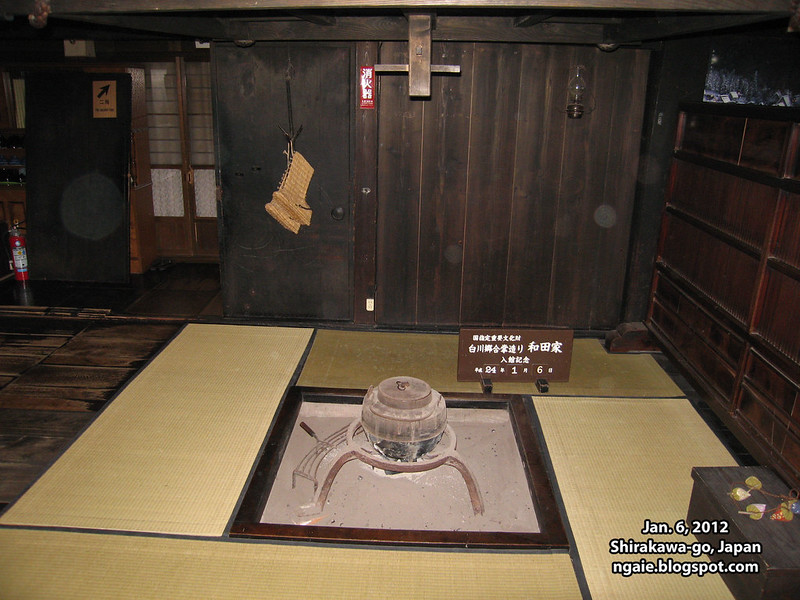
The view from the top level of the one of the farmhouses.
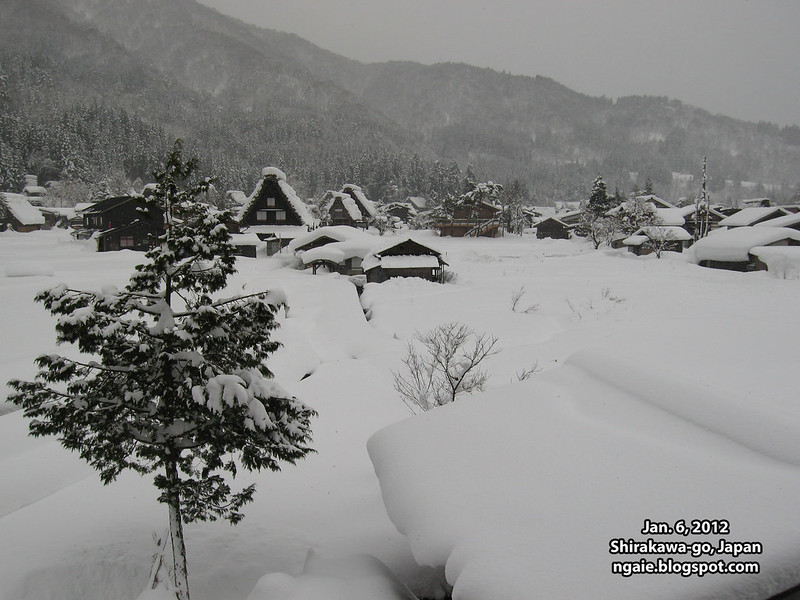
Next was the "viewing point" on the side of the mountain where you could see the village from a bird's eye view. You had to take a shuttle bus from the main bus station from town. You could have walked up the mountain to the viewing point although technically it was prohibited during the winter season - that didn't stop other tourists as I saw them walking up the mountain road that our bus used to get to the viewing point.
It would have been more spectacular if it didn't start to snow...
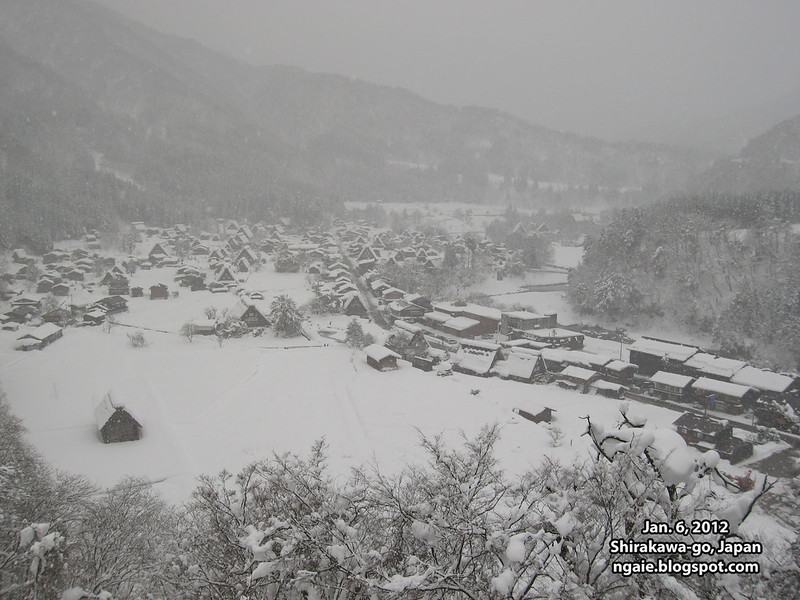
The last attraction I visited from retiring to the ryokan was the open air museum. The open air museum is basically a collection of "gassho-zukuri" farmhouses that had been relocated and preserved here.
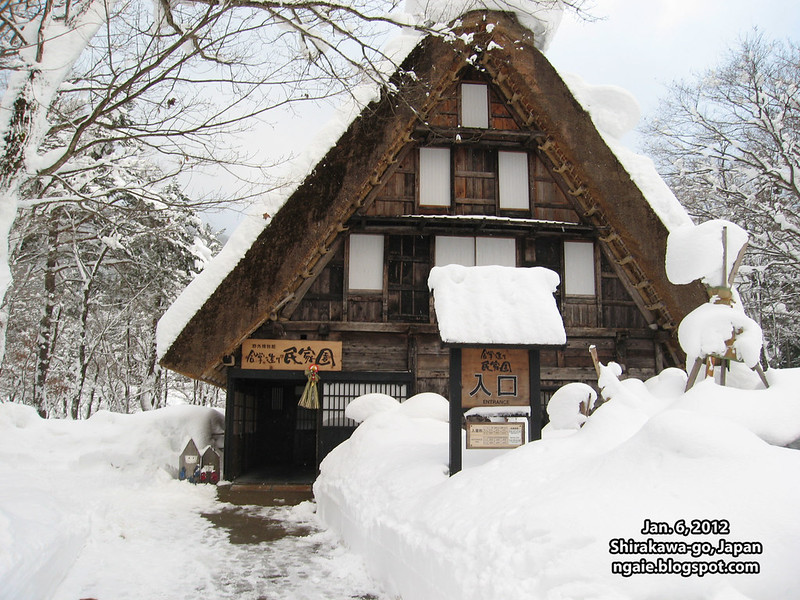
Map of the open-air museum.

By the time I got to the museum, the sun was already getting ready to set.
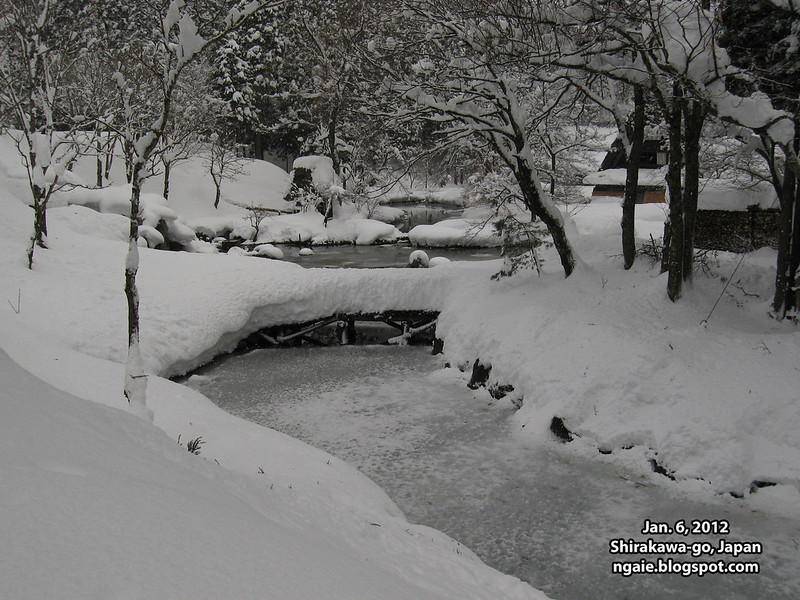
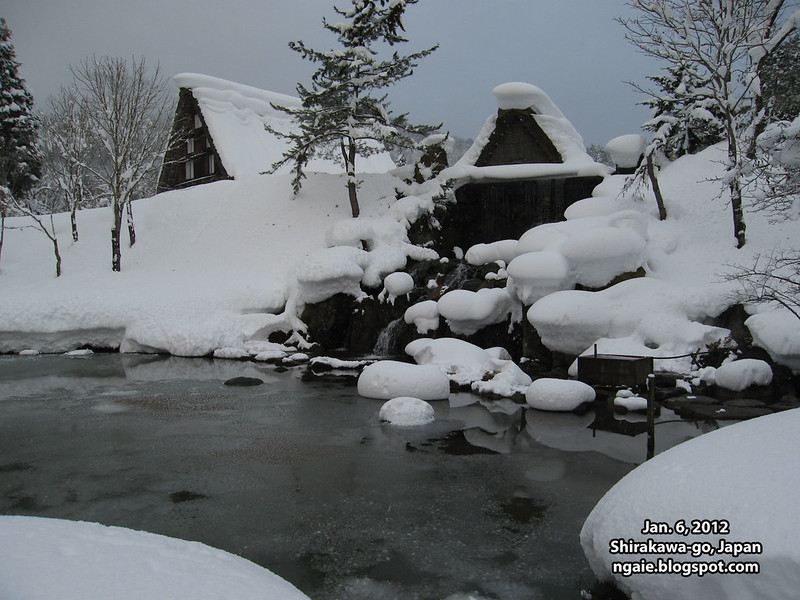
Retiring for the night. The tiny ryokan room housed in the "gassho-zukuri" farmhouse. I have to say that it was a rip off at 10,000 yen for one night including dinner the facilities weren't so good and the service was pretty lousy. The path to the ryokan wasn't even cleared of snow and the shared bathroom facilities were quite utilitarian.
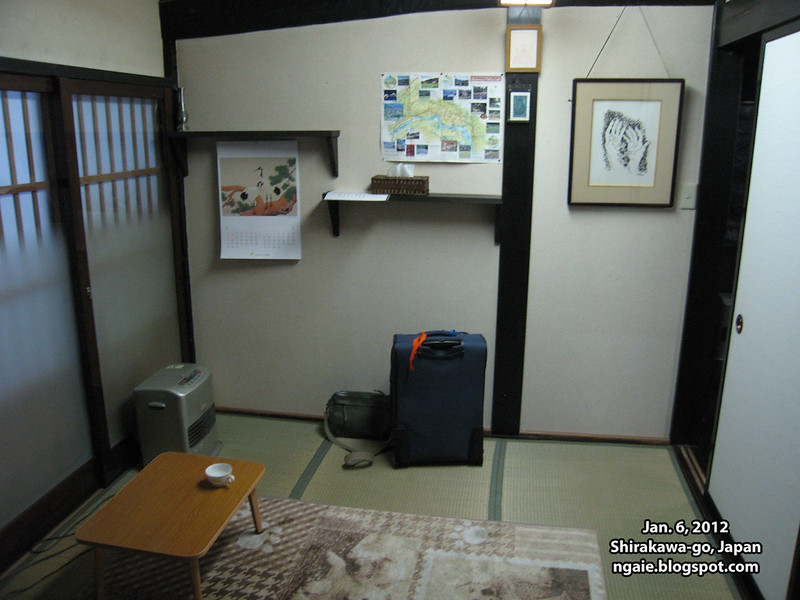
Overall, Shirakawa-go is worth a day trip, not an overnight stay, but an overnight stay might be necessary if you rely on public transport because there are only bus services in the morning and in the afternoon at like 15:00~.

3 comments:
Wonderful pictures !!. I visited this place in April, 16. Zukuri huts are amazing to see and whole village is very charming. When I visited I could see Mt Fuji clearly. It was a great day. check my experience on this post.
http://www.ultrawidelife.com/historic-village-of-shirakawa-go/
Hi,
May I know which Gassho Zukiri you stayed in?
Hi Fred,
I stayed at "Shirakawago-Shimizu". It was not my first choice as other ryokans were fully booked. I would not recommend staying at the one I stayed at. There are much better ones for the price you pay for.
Cheers.
Post a Comment